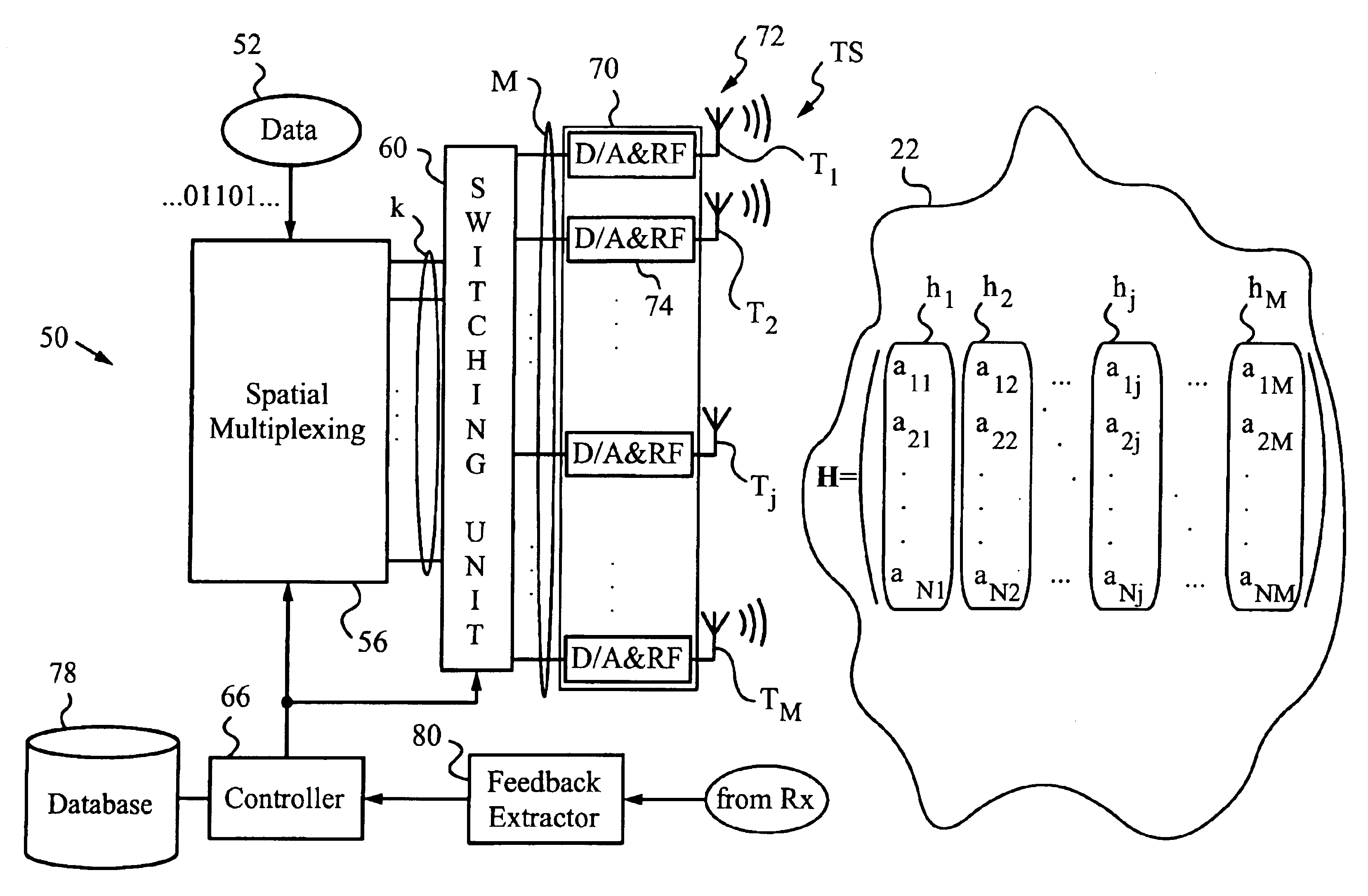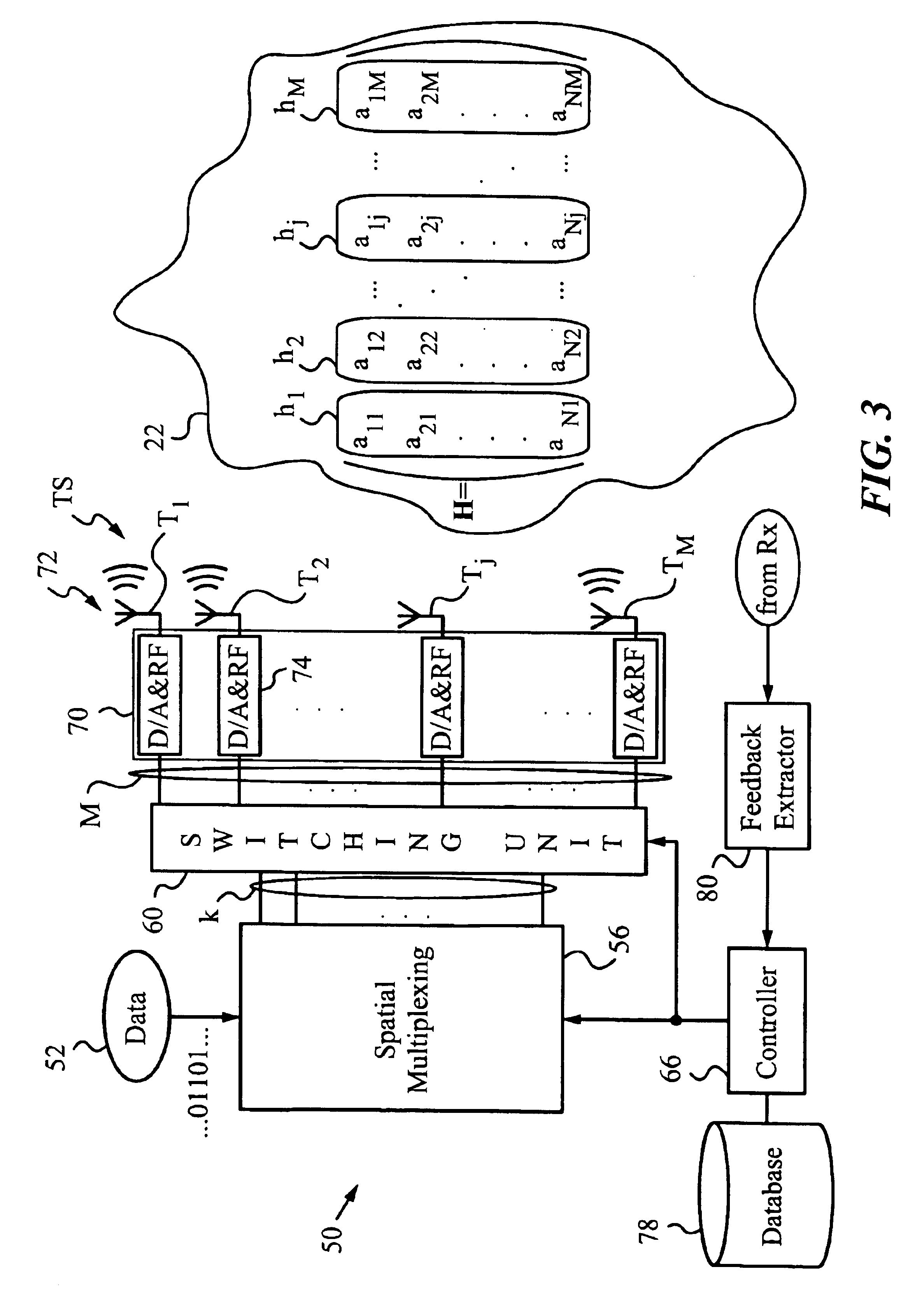Method and system for mode adaptation in wireless communication
a wireless communication and mode adaptation technology, applied in the field of mode adaptation, can solve the problems of inability to adapt to inability to coding techniques and data formats, and inability to achieve the current data rate, etc., and achieve the effect of improving the quality parameter
- Summary
- Abstract
- Description
- Claims
- Application Information
AI Technical Summary
Benefits of technology
Problems solved by technology
Method used
Image
Examples
Embodiment Construction
and the preferred and alternative embodiments is presented below in reference to the attached drawing figures.
BRIEF DESCRIPTION OF THE FIGURES
[0031]FIG. 1 is a simplified diagram illustrating a communication system in which the method of the invention is applied.
[0032]FIG. 2 is a simplified block diagram illustrating the transmit and receive units according to the invention.
[0033]FIG. 3 is a block diagram of an exemplary transmit unit in accordance with the invention.
[0034]FIG. 4 is a block diagram of a spatial multiplexing block of the transmit unit of FIG. 3.
[0035]FIG. 5 is a block diagram of exemplary receive unit in accordance with the invention.
[0036]FIG. 6. is a schematic illustrating the operations performed on the channel matrix H.
[0037]FIG. 7 is a block diagram of a mode selection block of the receive unit of FIG. 5.
[0038]FIG. 8 is an exemplary flow chart of the method of the invention.
[0039]FIG. 9 is a diagram of another embodiment of the invention.
DETAILED DESCRIPTION
[004...
PUM
 Login to View More
Login to View More Abstract
Description
Claims
Application Information
 Login to View More
Login to View More - R&D
- Intellectual Property
- Life Sciences
- Materials
- Tech Scout
- Unparalleled Data Quality
- Higher Quality Content
- 60% Fewer Hallucinations
Browse by: Latest US Patents, China's latest patents, Technical Efficacy Thesaurus, Application Domain, Technology Topic, Popular Technical Reports.
© 2025 PatSnap. All rights reserved.Legal|Privacy policy|Modern Slavery Act Transparency Statement|Sitemap|About US| Contact US: help@patsnap.com



